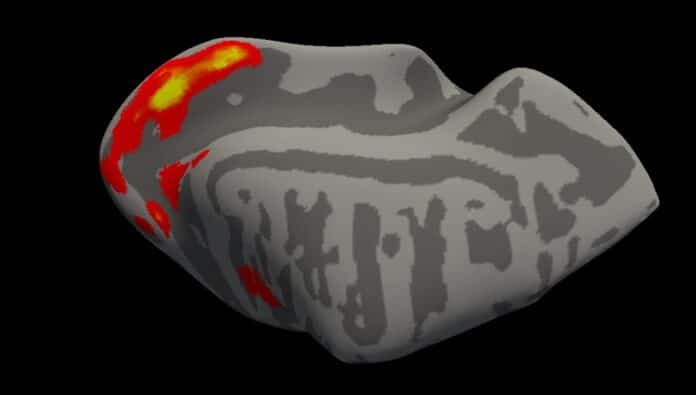Scientists at the University of Pennsylvania are studying cones, the cells in our eyes responsible for color and daylight vision. Gustavo D. Aguirre and William A. Beltran aim to understand inherited retinal diseases. Their work involves restoring missing cone function by introducing a normal gene into photoreceptor cells.
Beltran, the Corinne R. and Henry Bower Endowed Professor of Ophthalmology said, “Both humans and dogs are affected by retinal disease, and a new study of daylight vision using a canine model offers a critical insight for evaluating “whether these cell replacements—where we are introducing cones into the retinas of these dogs—is a successful approach for restoring cone vision.”
Teaming up with cognitive neuroscientist Geoffrey K. Aguirre, researchers, including Gustavo D. Aguirre, studied dogs with retinal diseases. Using fMRI, they discovered it can measure brain responses to both black and white and color information, revealing the area responding to cone stimulation. In a disease caused by the NPHP5 gene mutation, gene therapy restored responses to black-and-white stimulation, promising future treatments.
The results of their study were published in Translational Vision Science & Technology. Co-authors include Huseyin O. Taskin, a former research specialist now a grad student at the University of Toronto, and Jacqueline Wivel, a veterinary technician.
Taskin, the first author, said, “Canine models are useful for studying retinal diseases because they have various naturally occurring genetic disorders. The ultimate goal is to demonstrate that these disorders can be treated in canines before translating it to human patients.”
Gustavo Aguirre said, “The hope is that successful therapeutic approaches in people will become available to veterinarians to benefit man’s four-legged friend.”
The study, led by Geoffrey Aguirre, aimed to understand daylight vision in dogs with retinal diseases. According to Aguirre, knowing the baseline vision helps assess the effectiveness of retinal disease treatments.
William Beltran highlights the paper’s significance, showing that gene therapy improved cone function in a model lacking it. In the NPHP5 mutation disease, cones are present but nonfunctional, causing day blindness in dogs, and the study indicates gene therapy’s potential to restore function.
In the past, the research used methods like electroretinography and visual behavior tests for measuring responses, requiring extensive dog training. This study, led by Geoffrey Aguirre, utilized fMRI, a faster and non-invasive alternative. Unlike other methods, fMRI provides more precise insights into the visual cortex. While a previous study focused on Leber congenital amaurosis, this new research specifically targets cone stimulation, advancing our understanding of retinal diseases.
In conclusion, the fMRI-based study offers a promising model for restoring cone function in vision. This research advances our understanding of retinal diseases. It provides a faster, non-invasive method for assessing treatment effectiveness compared to traditional approaches.
Journal reference:
- Huseyin O. Taskin; Jacqueline Wivel et al., Cone-Driven, Geniculocortical Responses in Canine Models of Outer Retinal Disease. Translational Vision Science & Technology. DOI: 10.1167/tvst.13.1.18.
